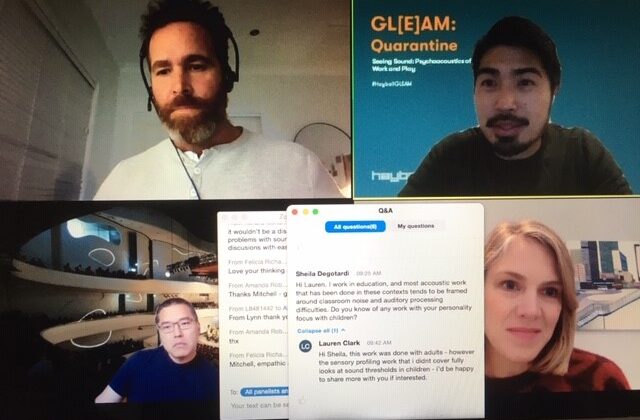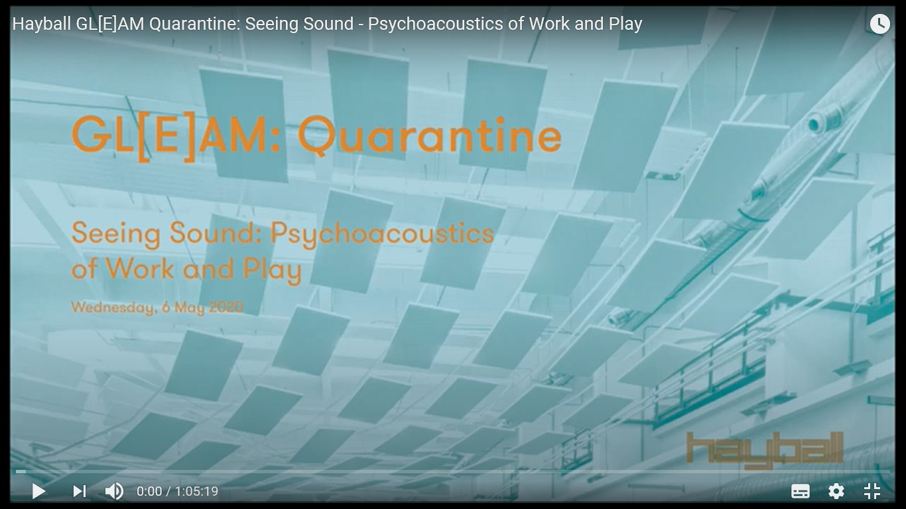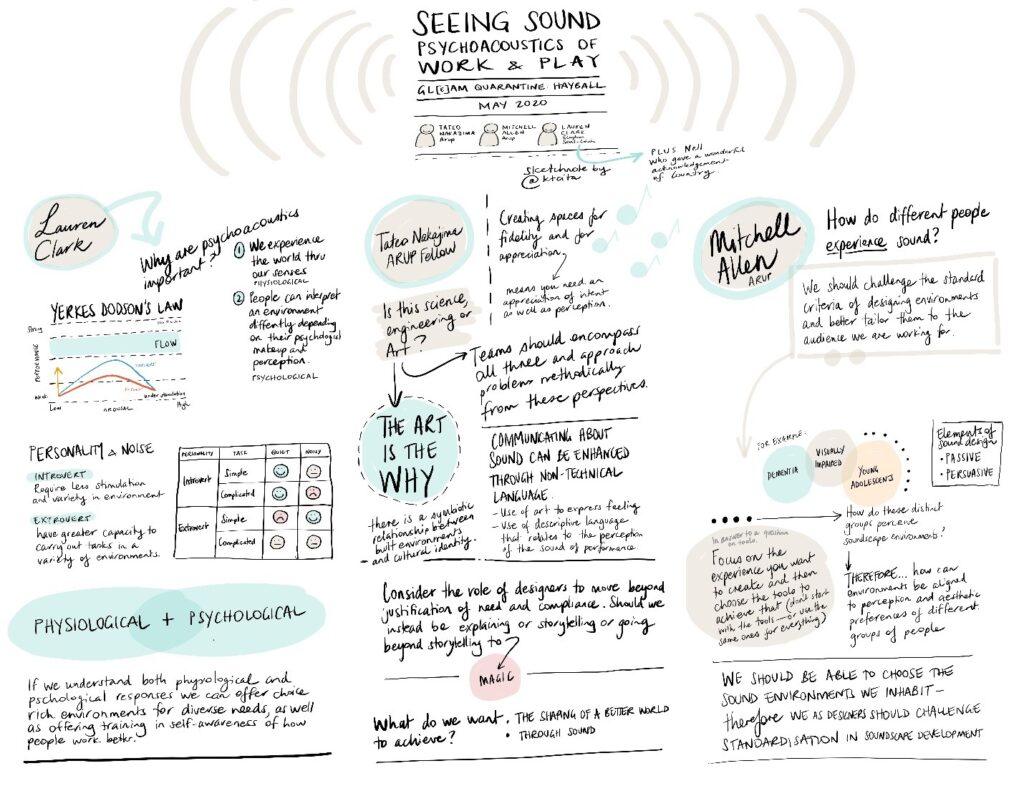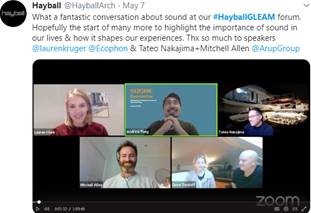

The global Covid-19 pandemic has profoundly affected the way we live and work. Connection is both far more challenging due to social distancing measures, and also far easier because of the connectivity that is provided through the internet and digital platforms. Everywhere one looks, there is another previously face-to-face activity that has been moved online – conferences and learning sessions are certainly one of these activities.
Adapting to the challenge of being unable to host events in person, the Hayball architecture practice in Sydney moved their monthly GL(E)AM sessions, usually held at their practice, to an online stage. These sessions are used to explore topics relevant to the architecture practice and the wider design industry. During the May GL(E)AM: Quarantine session the topic ‘Seeing sound: Psychoacoustics of work and play’ was explored. Lauren Clark , one of Ecophon’s Concept Developers who is based in South Africa, joined the session to share some of the research work that Ecophon has been doing on the topic of Psychoacoustics.
A recording of the 1 hour session is available below.
and if you don’t have an hour to spare, take a look through the graphic session notes communicating the core details of each talk.

During this GL(E)AM session on ‘Seeing sound: Psychoacoustics of work and play’, you will hear Lauren unpack how response to noise can be influenced by one’s personality. The reality that some people are more affected and disrupted by noise and sensory stimulus around them, while others can find it helpful to be surrounded by more activity when doing certain tasks, is a view which makes the design and use of workplaces a much more complex task than previously understood.
Tateo Nakajima, who heads up Arts, Culture & Entertainment at ARUP, presents several concert hall projects, undertaken by Arup where acoustics were a particular focus. His view on the ability of sound to create magic is reflected in the beautiful projects presented.
Mitchell Allen who leads NSW Acoustics Audio-Visual and Theatre at ARUP, shared a few exhibition and installation projects where sound was used to create particular experiences – for instance, simulating what it may feel like to live with dementia and raising this as an important factor to consider when designing certain urban environments.
Throughout the session, the topic of sound is broadened beyond the normal bounds of decibel and reverberation time showing the vast opportunity that exists in wielding acoustics in a more imaginative way.

Hayball Architects are also Industry partners in the
ILETC (Innovative Learning Environments and Teacher Change) Australian Research Council four year project which Lauren has been involved with.
If you are interested in following more GL(E)AM sessions, click here. to register for future sessions. Incidentally, the (E) represents education’ or learning which is at the heart of culture (the GLAM sector) hence GL(E)AM.
If you would like to learn more about Psychoacoustics, do take a look at the research Ecophon has done on this topic . click here.

